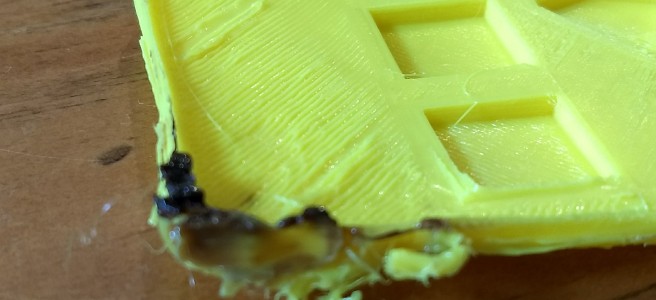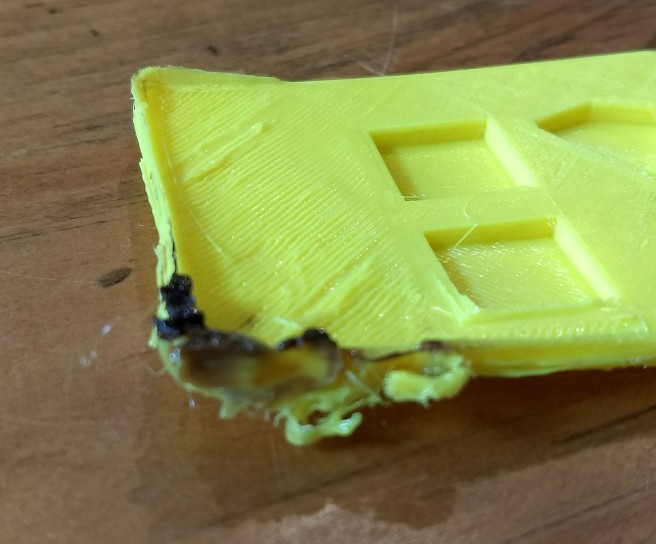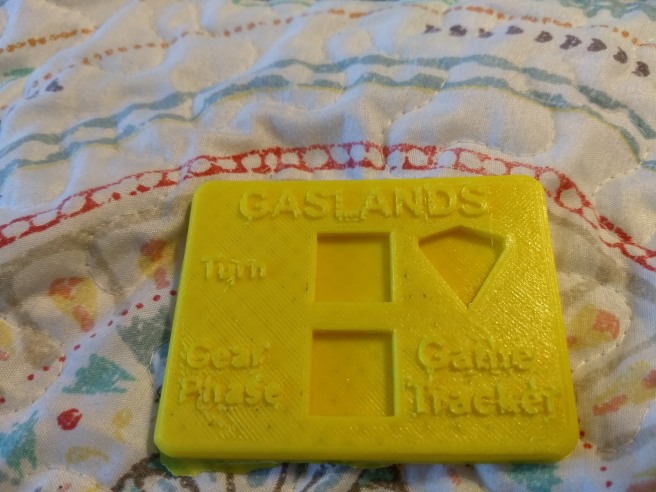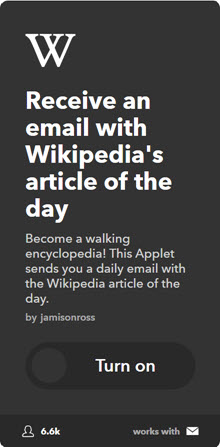If anyone wants to drop $150 on me, you can get me a copy of the game for which I just wrote an article:
http://www.dicetowernews.com/a-new-dawn-for-eclipse-fans/53065
If anyone wants to drop $150 on me, you can get me a copy of the game for which I just wrote an article:
http://www.dicetowernews.com/a-new-dawn-for-eclipse-fans/53065
An article for DiceTowerNews A precious Lord of the Rings: Living Card Game special edition
Another article I wrote for DiceTowerNews http://www.dicetowernews.com/more-terraforming-mars-is-on-its-way/52880
Read my article at DiceTowerNews.com:
New dexterity game from Renegade Game Studios
You might now know this, or you might have heard of it, but not seen it happen. On occasion, some of the sites you visit will track your visits and modify their prices based upon that data. For example, they might start you with a low price, saying that the sale only lasts for a certain amount of time. They are trying to drive you to make a quick decision. On your next visit, that clock might be shorter and the price higher, further increasing your sense of urgency.
I knew this happens, but hadn’t really proven it to myself until recently. I was looking for a course which could teach me some Microsoft Project skills and explain some things I have never been taught. So I landed on Udemy and the Microsoft Project Tutorial class.
Upon my second visit, the next day, I noticed that the price had gone up. Only a dollar, but hey… So I decided to try an experiment. I deleted all of the cookies on my machine related to that site… and voila, the price dropped back down.
Next time you are shopping and see ‘sales’ or any ‘limited time offer,’ delete your cookies and maybe visit the site in incognito mode… you might see a difference.


A lot of folks who have heard of 3D printing but don’t have much experience with it envision it as a sort of Ctrl+P for making crappy plastic stuff. (For those of you who don’t know, that is the Windows shortcut for printing. Why didn’t you know that?) While the ‘crappy plastic stuff’ part could set of an interesting discussion, I am here to tell you that the Ctrl+P part is definitely not true.
I have been learning to use my 3D printer (Reprapguru Prusa i3 V2) and have printed quite a quantity of stuff. Most of what I have printed so far is definitely more toy than tool, but that is why I got it. I had some experience using a MakerBot Replicator and a Printrbot at Tech Shop, so I sort of knew what I was getting into. My first prints at Tech Shop were basically a mess, but I figured that was because I didn’t know anything at all. Fair enough. But as my experience has grown, I’ve still got to say that there is definitely an art and a science to 3d printing that takes it well out of the realm of Ctrl+P. Higher end printers tend to make things a bit easier on you, but even then it isn’t exactly trivial.
Here’s the real meat of today’s discussion… adherence. You can generalize printing as squirting out melted plastic onto a surface and building up layers until a recognizable shape forms. It stands to reason that you want that plastic to stay where you put it, to adhere. Let’s name that place where we put the stuff and call it the build plate. The medium is melted plastic, so it seems like you would be able to reason out ways to get your medium to adhere to the build plate right? Okay, let’s do that. Hot plastic and a cold build plate? Maybe it gets hard to fast and doesn’t stick. Warmer build plate? Sure, warm plastic will stick better.
This is where things fall apart a little. I am currently using PLA as my medium. It is a plastic that tends to want to squirt out of the printer at somewhere around 200 degrees (Celcius… get with it!). The build plate should be significantly cooler, you don’t want the plastic to stay melted, it needs to adhere to the build plate, but retain shape and adhere to the next layers. The art and skill of the thing starts to enter the picture. Not all filaments (the raw plastic medium) of even the same type will behave in exactly the same way or perform at exactly the same temperatures. Most people will say that your build plate should be within the range of 50-70 degrees, but that’s a pretty big range. So let’s say you aim for the typical range and start at 60 degrees. One of the things that can go wrong with a print is that your object won’t adhere at all. Likely this means things are *way* too hot, or way too cool, either of which would be somewhat obvious to you. But more often, you will get a print that sticks, but does weird things. Most commonly, it will warp or curl. This is where the center and some of the sides will adhere, but a corner will pull up off of the build plate and you won’t get square edges and corners but it will look like the corner got bent up and deformed your whole print.
I’ve seen this happen a lot of times, and I have fussed with it a lot of times. I’ve done 100+ hours of printing so far (not as much as it sounds) and so I’ve definitely seen this and ‘fixed’ it a few times. Maybe it is the man in me, or the animal (same?) but my first approach was.. more heat! Heat it up, keep it below that slipper melted stage and it will stick better right? Nope.
I had been trying to print this nice big, flat rectangle and getting it curled up in the corners. So much so, that it would curl up, run into the print head and that hot little bugger would melt the previously printed part that curled up… disaster.
So I took meself to the interwebs and did more (not my first) research on curling. Amongst all of the very detailed advice I found this very simple statement “Rule of thumb for PLA warping on a heated bed – you’re likely printing too hot. ” (link). Well, there you go… I reduced the temperature by almost 15 degrees from where it was. Perfect print! Well, the print had some other issues, but it didn’t curl.
Have you heard this before? More is not always better.

 There are a lot of ways to get a little bit smarter by reading things on the internet. And for that matter, I’d say there are plenty of ways to get dumber too! You can do the former by reading your favorite blogs, news sites, keeping a Reddit or Feedly collection of things and find other methods of reading the things that interest you.
There are a lot of ways to get a little bit smarter by reading things on the internet. And for that matter, I’d say there are plenty of ways to get dumber too! You can do the former by reading your favorite blogs, news sites, keeping a Reddit or Feedly collection of things and find other methods of reading the things that interest you.
Those ways of reading are great, but they tend to feed your own perspective as well as inform you a bit more deeply on the things that interest you already. But you’re really only going to reinforce your own opinions and learn more about what you already know. Common sense tells you that our brains expand and get smarter if we learn more and by reasoning, more about things we don’t already know .There’s good research to support that notion as well.
There are a number of different ways to read something unexpected and new each day. I have mentioned the NASA Image of the Day in a previous post. That’s a great example of what I mean. You can also get a word of the day from a lot of different sources. A really fabulous source of new information for that lazy brain is the Wikipedia featured content, which is curated, and somewhat random. Or you can go to Wikipedia at any time and click the ‘random article link.’ Reddit also has a random link which will take you to a random reddit page. Reddit is mostly a set of links to other places on the web, followed by comments on those links, but sometimes has discussions that start there and often has reference links on that subject.
BUT… If you are like me, you don’t particularly want to wander around the web to each of these sources, and are probably too lazy to do so. Some of the more tech savvy will suggest that you use some sort of feed reader to collect these, but that also requires you to put together the sources and browse to that page each day. However, I’d be you that we ALL check our emails every day.
My suggestion is to use If This Then That (https://ifttt.com) to have these sources delivered directly to your inbox. With a little bit of setup for your email and such, IFTTT can be configured to deliver many of these sources to your inbox. Then you can read them like an email and mark them read to discipline yourself to actually do this each day.
So, to learn a little bit each day and sharpen that brain, set up IFTTT with your email and then start adding things like the Wikipedia Article of the Day to your Inbox with an applet.
 It is great for our brains to learn a little bit about subjects outside of our humdrum routines; it keeps us sharp! In order to hone your brain a bit each day, you might want to put a few of those things into your routine. It doesn’t have to be hours of study, but just a minute or so on a new subject can spice things up a bit.
It is great for our brains to learn a little bit about subjects outside of our humdrum routines; it keeps us sharp! In order to hone your brain a bit each day, you might want to put a few of those things into your routine. It doesn’t have to be hours of study, but just a minute or so on a new subject can spice things up a bit. Just in case my employer reads this, I should let you know at the start that I have a really good job. Good pay, good benefits and decent, smart people all around me. But I would say that I seriously lack engagement with my work. There are a few reasons for that, most of which I don’t understand or can’t change. But there is at least one area that is completely my responsibility. That is, I don’t have friends at work.
Just in case my employer reads this, I should let you know at the start that I have a really good job. Good pay, good benefits and decent, smart people all around me. But I would say that I seriously lack engagement with my work. There are a few reasons for that, most of which I don’t understand or can’t change. But there is at least one area that is completely my responsibility. That is, I don’t have friends at work.
I consider friends to be people with whom I can be real; people with whom I can grieve, complain, celebrate and have a few beers now and then. You should always be careful of what you say and do at work, with colleagues close or not so close. It could definitely affect your image and maybe even your job security. So in general, your closest colleagues are risky propositions at best, and possibly downright dangerous.
Gallup is one of the companies that makes it’s profits surveying the American public to death. They are one of the largest firms that tells the American public what to they think. There is a lot of serious science behind determine what questions they ask in their surveys to get the most accurate results. In their case, efficiency is determined by the number of questions and the amount of time required to get an accurate and actionable result. One of the surveys that Gallup provides for corporate customers is the Q12. This is a twelve question survey (go figure) that is designed to determined employee engagment, and by extrapolation, employee satisfaction at work. Of course the reason they want to know is to increase the efficiency and retention of employees, and they can do this in just 12 questions. Out of those 12 questions, one is devoted entirely to asking you if you have friends at work.
Get that? Having friends at work is so important to your satisfaction there, that it is one of only 12 questions that used to quantify your satisfaction! It is not the only factor, but it can be considered a rather large one. And of course, it has a tremendous psychological and emotional effect on the rest of your life as well.
Much of the west will be experiencing it’s hottest days yet this season over the next few days. I thought I might save you some typing.. no longer do you have to type ‘degrees’ when discussing the weather.
You should be able to use one of these methods in any text field or editor on your platform to enter a degree symbol [°]:
…this is also a useful thing to know when drawing naught ASCII art and emoji.